Drug Induced Kidney Disease
Drug induced kidney disease. These drugs need to be identified and avoided to prevent kidney injury. Drug-induced Kidney DiseaseAlwin HL Loh and Arthur H Cohen 241 Podocyte Injury Minimal change disease MCD is a condition characterised ultrastructurally by widespread effacement of podocyte foot processes coupled with normal or near normal findings by light microscopy LM and immunofluorescence IF. Xinyu Zhang 1 Peter T Donnan 1 Samira Bell 2 Bruce Guthrie 1 BMC Nephrology volume 18 Article number.
Patients at highest risk of drug-induced nephrotoxicity are those with one or more of the following. DrMuhammad Umair PharmD MPhil. Drug-induced diseases are primarily diagnosed based on the history of drug intake obtained from the patient or the family.
Drug-induced kidney disease constitutes an important cause of acute renal failure and chronic kidney disease in present day clinical practice. Drug-induced nephrotoxicity is caused by nephrotoxic drugs that cause kidney damage. The GBM usually has a normal texture and thickness.
Drug induced kidney disease injury 1. The causative drugs were identified in 102 cases including bucillamine in 38 cases of MN gemcitabine in 3 cases of thrombotic microangiopathy and other anticancer drugs in 14 cases anti-vascular endothelial growth factor drugs in 3 cases and propyl thiouracil in 3 cases of anti-neutrophil cytoplasmic antibody-related nephritis. Drug Induced Kidney Disease DIKD Clinical Pharmacy BY.
The kidney maintains the vital functions of clearing excess body fluid and removing metabolic and exogenous toxins. Drug-induced nephrotoxicity is increasingly recognized as a significant contributor to kidney disease. The 6Rs of drug induced nephrotoxicity Abstract.
Drug-induced kidney disease is best prevented by avoiding the use of potentially nephrotoxic agents for patients at increased risk for toxicity. Drug induced kidney disease 1. The initial diagnosis of drug-induced kidney disease DIKD typically involves detection of elevated serum creatinine S cr and blood urea nitrogen for which there is a temporal relationship between the toxicity and use of a potentially nephrotoxic drug.
The initial diagnosis of drug-induced kidney disease DIKD typically involves detection of elevated serum creatinine S cr and blood urea nitrogen for which there is a temporal relationship between the toxicity and use of a potentially nephrotoxic drug. Drug-induced kidney failure is a major adverse.
Patients at highest risk of drug-induced nephrotoxicity are those with one or more of the following.
The initial diagnosis of drug-induced kidney disease DIKD typically involves detection of elevated serum creatinine S cr and blood urea nitrogen for which there is a temporal relationship between the toxicity and use of a potentially nephrotoxic drug. Finally the effector phase in drug-induced ATIN is characterized by renal infiltration with lymphocytes macrophages eosinophils mast cells and other cells which cause tubulointerstitial inflammation and injury. These drugs need to be identified and avoided to prevent kidney injury. Drug-induced diseases are primarily diagnosed based on the history of drug intake obtained from the patient or the family. The causative drugs were identified in 102 cases including bucillamine in 38 cases of MN gemcitabine in 3 cases of thrombotic microangiopathy and other anticancer drugs in 14 cases anti-vascular endothelial growth factor drugs in 3 cases and propyl thiouracil in 3 cases of anti-neutrophil cytoplasmic antibody-related nephritis. Drug Induced Kidney Disease DIKD Clinical Pharmacy BY. The initial diagnosis of drug-induced kidney disease DIKD typically involves detection of elevated serum creatinine S cr and blood urea nitrogen for which there is a temporal relationship between the toxicity and use of a potentially nephrotoxic drug. Drug-induced nephrotoxicity is caused by nephrotoxic drugs that cause kidney damage. 3 linhas Drug-induced nephrotoxicity is defined by the presence of any kidney injury caused directly or.
Drug induced kidney disease injury 1. Patients at highest risk of drug-induced nephrotoxicity are those with one or more of the following. Drug Induced Kidney Disease DIKD Clinical Pharmacy BY. Drug-induced nephrotoxicity is increasingly recognized as a significant contributor to kidney disease. The causative drugs were identified in 102 cases including bucillamine in 38 cases of MN gemcitabine in 3 cases of thrombotic microangiopathy and other anticancer drugs in 14 cases anti-vascular endothelial growth factor drugs in 3 cases and propyl thiouracil in 3 cases of anti-neutrophil cytoplasmic antibody-related nephritis. The initial diagnosis of drug-induced kidney disease DIKD typically involves detection of elevated serum creatinine S cr and blood urea nitrogen for which there is a temporal relationship between the toxicity and use of a potentially nephrotoxic drug. Systematic review and meta-analysis.



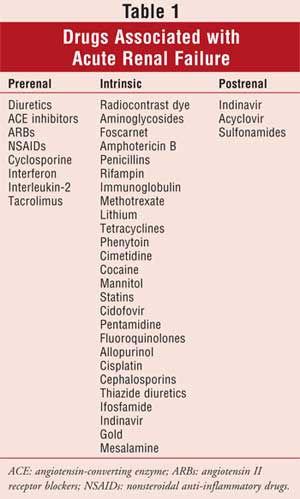

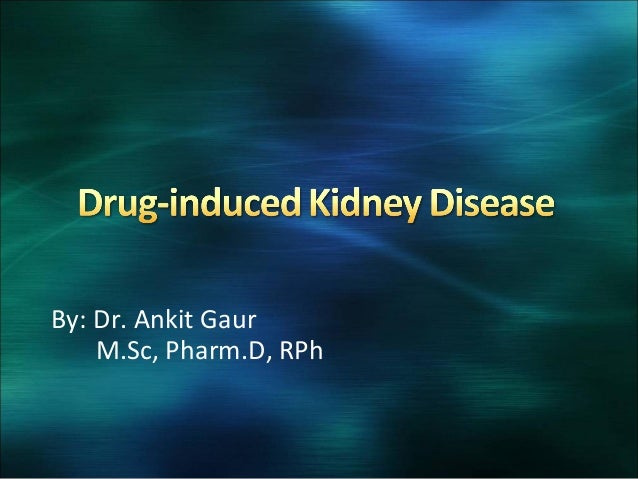



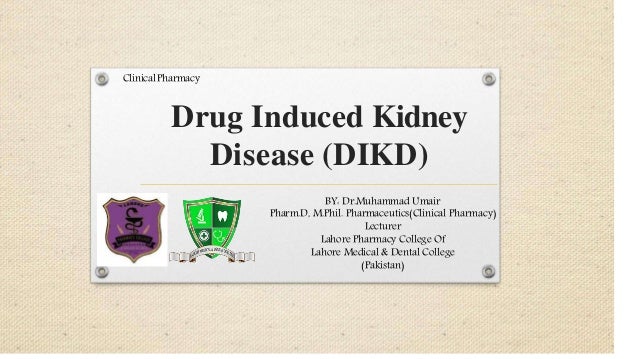





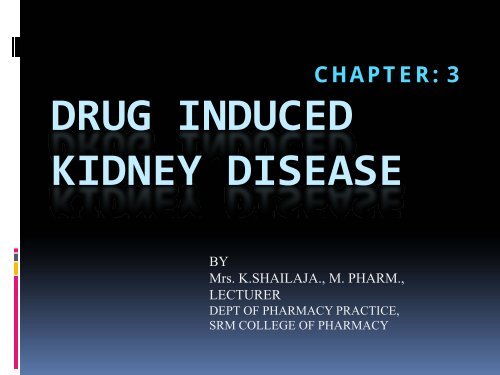



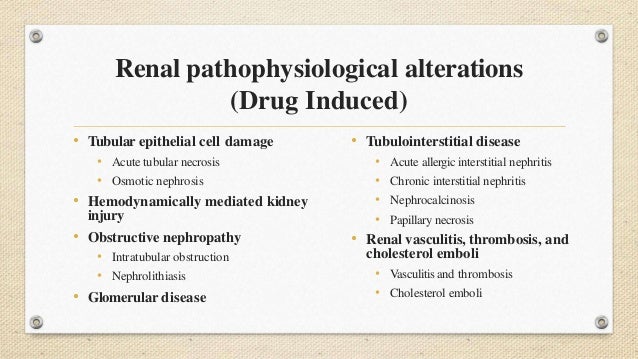







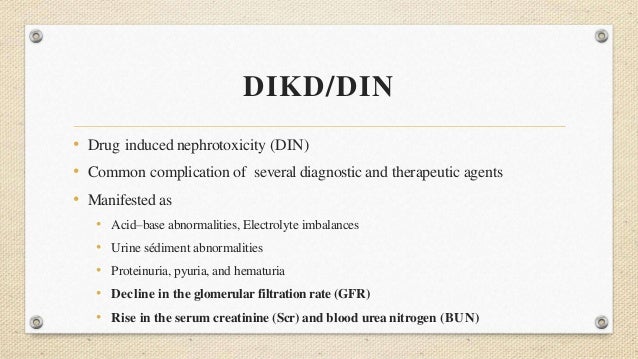
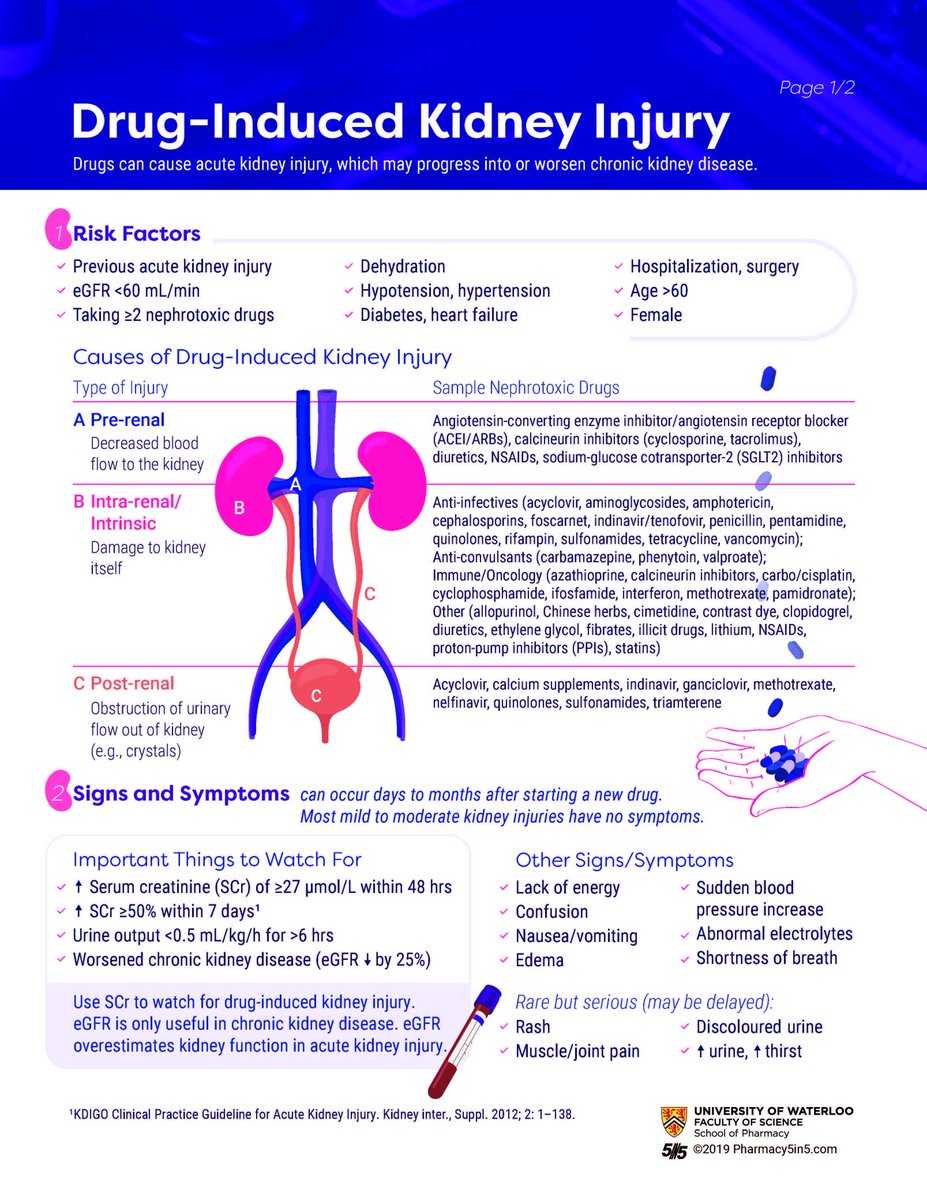
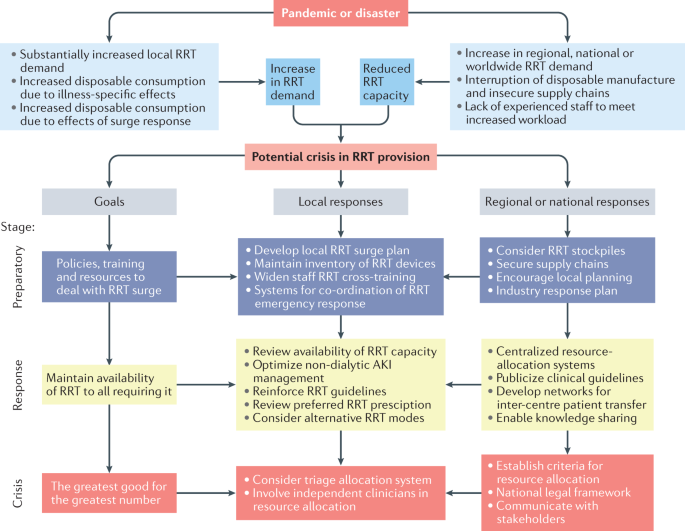





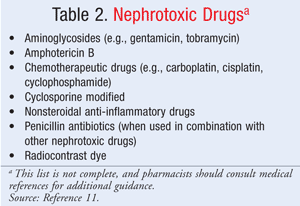








Posting Komentar untuk "Drug Induced Kidney Disease"